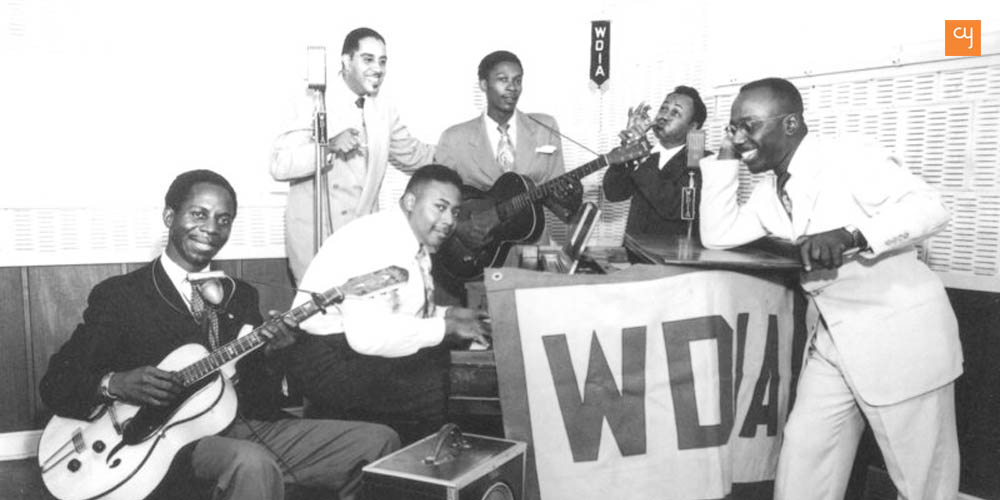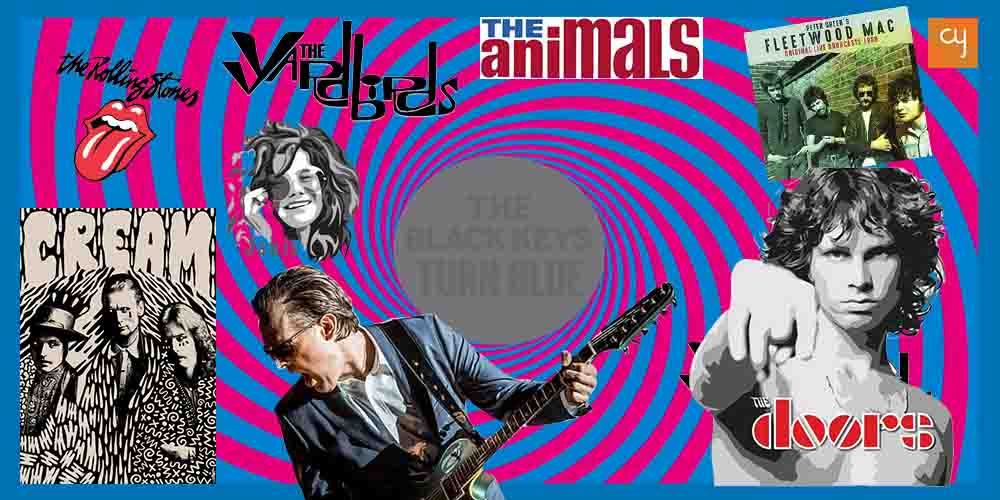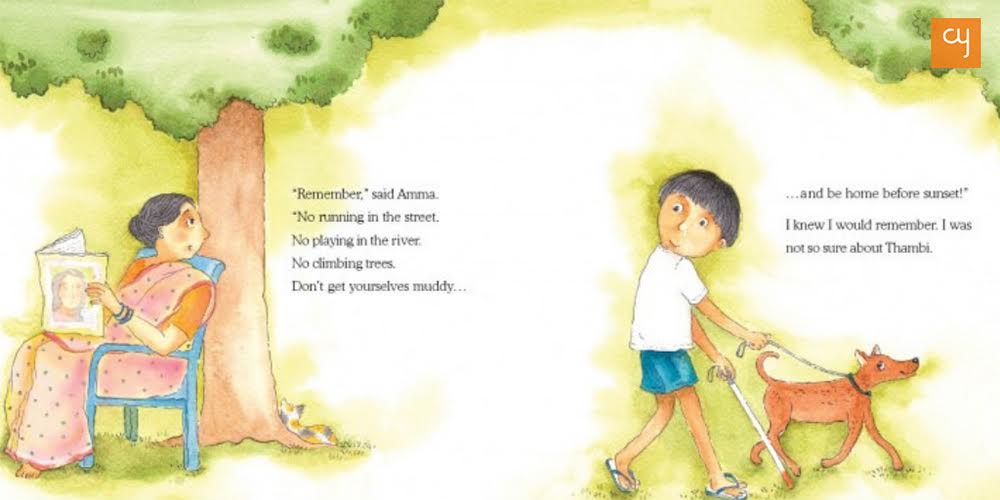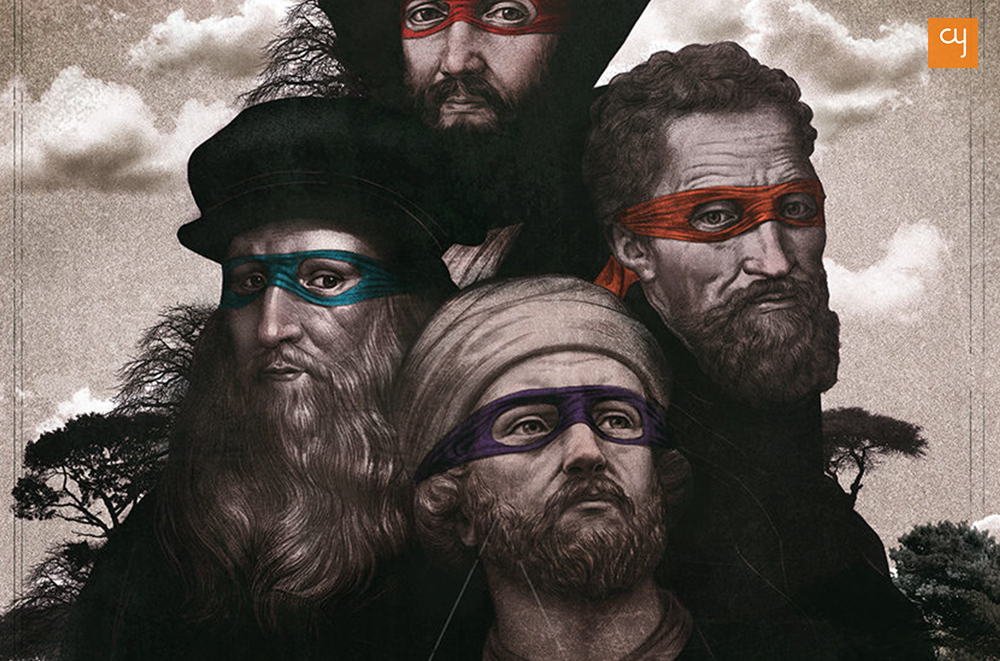Story of the Blues: An Empire risen from the ashes of the Plantation
Blues is referred to as the origin of modern western music. From Jazz to Hard Rock, most of the genres that we listen to were created by artists who were inspired by the blues. But where did the blues come from and how did it evolve?
“I’ll never, I’ll never
Get out of these blues alive
You know I’m doomed to the blues,
I’ll be doomed till the day I die”
—John Lee Hooker
There is a deep history when it comes to understanding where the Blues really came from. As the name suggests, in the simplest terms, it is music that came, primarily, from your blues—one’s melancholia, longing and despondency. And as times passed, it became an embodiment of expressing one’s deepest emotions. However, with the introduction of electronic instruments and revolutionary musicians, Blues slowly transformed giving birth to multiple new genres like jazz and rock & roll.
Blues wasn’t born in any studio, or a pub. It came from the American plantations in the 19th century. The African-American who worked as slaves in these plantations were bearers of some of the most heinous atrocities known to humankind. They were sold, beaten, killed, and treated like animals. In such times, they used to play music with some guitars and drums to ease their pain. The beats were similar to their African culture and their lyrics would be very descriptive of their struggles.
While singing at religious choirs and doing their chores, it became a popular phenomenon amongst them, and there were groups throughout the nation that would meet and forget their worries by playing music.
After the abolition of slavery in 1860s, the music evolved into a more systematic musical genre. They introduced electronic guitars, harmonicas and well-constructed drums which then created the original sound of the Blues. The basic composition of a Blues song would consist of some steady percussions or harmonica with guitars playing in a pattern called ‘12-Bar Blues, the most common form, where 12 beats are divided into 3 bars – 4 beats of the first bar, 4 beats of the middle bar and 4 beats of the last bar. The songs usually would have the same chord progressions but each individual guitarist would have their own key to play in.
Gradually, along with the instruments, the expressions expanded too. From reflecting upon the perils of slavery, their music spoke about their struggles with love, other than racial discrimination.
Rising from the gospel and spiritual traditions, blues was initially used in preaching and communal bonding, but with it entering the clubs, a large section of the Black community that was fiercely religious began calling it the “Devil’s Music”. Taking advantage of this, the White community supported those within the black community who called it so, disallowing Blues to gain popularity. They also began spreading rumours about musicians who excelled in Blues. For instance, once when the initially noisy Robert Johnson returned to the bars at Mississippi playing a fantastic seven-stringed guitar, the rumour that was passed around was that it was Devil’s doing, that he sold his soul to the devil to become the greatest guitarist alive.
Different styles of Blues
While there was uniformity in the way Blues made people feel through their music, the styles within the genre often differed because the black communities were spread far apart and therefore, created a unique style within their areas.
Delta Blues may be the style where it all started. Originating in Mississippi Delta, Delta Blues was mainly acoustic, since the early 20th century was yet to be introduced to electronic instruments. The basic instruments that musicians used to play included guitars, harmonicas, pianos, drums, even homemade instruments. With most of the performances being impromptu, there was no framed arrangement of the musicians. Sometimes musicians would just perform solo or record solo albums. Delta has produced some of the most iconic musicians, who are often referred to as the “Fathers of Blues”. Robert Johnson, Skip James, Willie Dixon, Charley Patton and Son House are some of the widely known names who inspired the successive generation comprising Muddy Waters, B.B.King and John Lee Hooker. And as musicians migrated throughout the country to find better jobs, they took their blues along creating a plethora of different styles.
Here is a full live performance by Son House that was recorded in 1969 which describes the essence of Delta Blues:
Chicago Blues is a product that was created when one such fine musician went north to make a name for himself in the music industry—Muddy Waters. Waters was a well-established blues musician in the Delta, but he wanted to explore more, and this exploration took him to Chicago where he was introduced to a more electrified range of instruments that produced an urban sound. Inspired by the urban vibe of the city, Waters’s blues got more energetic and introduced distorted guitar playing. The Chicago Blues got its true definition when Muddy Waters’ premier band, consisting of Little Walter on harmonica, Jimmy Rogers on guitar, Otis Span taking the piano and Elgin Evans on drums, created a multi-layered performance of the blues.
Memphis Blues, on the other hand, was born in a totally different environment from the other styles. Memphis in 1940’s became a cultural centre for the blacks throughout the south because of the Beale Street, a party destination for African-Americans from all around the United States.
So, when the blues came to Memphis, it got infused with the zeal and energy of the city. It was the birthplace of fame for various iconic musicians like Howlin’ Wolf, Sonny Boy Williamson and Ike Turner. But one of the most important musicians who contributed to the Memphis Blues was the Beale Street Blues Boy himself – B.B. King. He started his career as a singer and a DJ, but his unique style of guitar solos soon won the hearts of people. This included extended solos based on fluid string bending and shimmering vibratos which revolutionised Blues as the majority of succeeding blues musicians incorporated it in their guitar playing. His music gave inspiration to some of the most iconic guitarists like Eric Clapton, Jimi Hendrix, Keith Richards, Carlos Santana and Gary Clark Jr.
Texas Blues was a more rugged style majorly influenced by Chicago Blues but with the power of Rock & Roll. One of the most important musicians to contribute to Texas Blues was Freddie King who is today also known as “The Texas Cannonball”. His distinct style of guitar playing included use of metal fingerpicks while aggressively squeezing the strings to create elongated vibratos. His style has influenced various musicians like Peter Green, Eric Clapton and Jeff Beck who have incorporated his high-energy into their music.
One of the stalwarts of Texas Blues who led on to re-define high-energy guitar playing was Stevie Ray Vaughn. He would smack it, squeeze it and bend his guitars in so many ways but the music his fingers produced was melodious, funky and unique. In his short span of life, he created such iconic riffs and songs that have defined Texas Blues as a powerhouse style.
Blues on Air
Blues musicians started recording their music at the beginning of the 20th century. The first-ever blues album recoded was Crazy Blues by Mamie Smith and the Jazz Hounds which was in the August of 1920. But its circulation remained mainly within the Black community. Until the late 1940’s, radios would only feature western and light pop music with a little bit of classical music and all the anchors were predominantly white. It was ludicrous to think that a black man could ever be on radio.
But this changed when WDIA came in. Initially, they went on air and followed the popular guidelines of radio stations, playing the music that appealed to the white population. But soon, Bert Ferguson, co-owner of WDIA realised there was an untapped market that was not being catered by any radio stations – the Blacks. Black listeners contributed to half of WDIA’s audience that mainly followed Blues. So, WDIA started an all-Black Operator Station which featured Blues music and by the summer of 1949, it became the first all-Black Radio Station. It gave a career kick-start to some of the Blues pioneers like Rufus Thompson and B.B. King.

In 1954, WDIA was licensed to increase its signal power from 250 to 50,000 watts, which meant a frequency of 1070 khz making it a clear-channel. Its signals could now reach the Mississippi Delta’s dense Black population. WDIA was heard by 1.5 million blacks, which was about 10 per cent of the total black population in the United States.
The White Embrace & Legacy of Blues
As Blues originated from the African American culture, Jazz shared these roots as well. It embodied the structural composition of European instruments like trumpets, piano and double bass but the music composition sprouted from the African traditions. When the recently freed African-Americans began playing European instruments, Jazz was born. The music carried traditions from both these cultures and had a polyrhythmic structure which became a common ground. The crux of Jazz music is in the improvisation of musicians that is remarkably synchronised. It follows the European 12-tone scale while the bass, drums and strings show some groovy solos.
‘Dippermouth Blues’ by King Oliver is said to have created the template of Jazz music.
Blues musicians started infusing their music with jazz. T-Bone Walker, Elvis Presley and Fats Domino were some of the pioneers who were proficient in mixing the two genres and bringing the zeal of jazz in the blues which created Rock & Roll. Rock & Roll was upbeat; it had elements of Jump Blues and Boogie Woogie.
Rock & Roll turned Blues into an international phenomenon. By the end of the Second World War, Britain was introduced to Rock & Roll. The gloomy environment of post-war Britain accepted the lively Rock & Roll immediately and it became popular amongst teenagers. Curiosity led them to return to its origins in the Blues. Record stores would import Blues albums by Muddy Waters, Little Richard, John Lee Hooker, B.B. King and many other pioneers of the genre.
The Yardbirds, Rolling Stones, John Mayall and The Bluesbreakers, Them, Manfred Mann and The Animals were some of the initial British Blues Bands that started with playing covers of their idols and later began composing their own music which started drifting from the blues and created a sound of its own, what we call Hard Rock today.
And two of the most iconic bands that defined this were Cream and Peter Green accompanied Fleetwood Mac. Cream was a holy trinity of Eric Clapton, Ginger Baker and Jack Bruce who were admirers of blues and created dynamic music with improvisations and riffs. Their purely original covers of Skip James’s ‘I’m So Glad’ and Howlin Wolf’s ‘Spoonful’ reflected their love for blues and creative intelligence that made these songs their own.
By the time blues caught its wave in Britain, people in the United States were drifting away from it. Unaware of this situation, British bands flew in to the States in the mid-60s to understand the musicians that they idolised and in return they reintroduced Blues to the young crowds of the country. The movement began to be known as “Blues Revival” or the British Invasion. New American musicians started making songs that were inspired by traditional blues music. Jimi Hendrix, Stevie Ray Vaughn, Janis Joplin and The Doors are some of the best examples who created the American Blues Rock.

Even today, the legacy of blues is carried on by some stalwarts like Gary Clark Jr., John Mayer, Eric Gales, The Black Keys and Joe Bonamassa. They have successfully created popular music that still retains the feel and techniques of Blues artists. Even in India, there have been musicians who have been captivated by the blues and aspire to create music of their own. Blackstratblues, Louis Banks, Soulmate and Blues Conscience showcase the Blues, Blues Rock and Jazz potential of our country.
While music has always been present throughout the world, there was something about the blues which touched everyone deeply, comforting them. Jack Bruce once said, “It’s a living and breathing expression of people’s sufferings and desires, and that’s what the blues is. It’s much more important than something you can sell or put a label on. It’s humanity itself”.
promotional
Yatra Archives

 How Tulika Books is creating impact in children’s lives through picture books
Nandini Varma
How Tulika Books is creating impact in children’s lives through picture books
Nandini Varma
Aug 20, 2019
A children’s book about a boy who feels like a girl. And about a child brought up by grandfathers. These are some of the stories published by Tulika Books, who have been making children’s picture books since 23 years. Little…
 Dalgona Coffee: A worldwide social media trend about home-made café experience
Harshil Shah
Dalgona Coffee: A worldwide social media trend about home-made café experience
Harshil Shah
Apr 1, 2020
While the lockdown has ignited various trends on social media, one that has received a major global following is #DalgonaCoffee. With thousands of posts on its name, here’s all you need to know about the Dalgona Coffee wave. I first…
 Leonardo, Michelangelo, Raphael and Donatello—Artists or Teenage Mutant Ninja Turtles characters?
Harshil Shah
Leonardo, Michelangelo, Raphael and Donatello—Artists or Teenage Mutant Ninja Turtles characters?
Harshil Shah
Nov 4, 2019
Did you ever wonder where the Teenage Mutant Ninja Turtles’ characters got their names from? Well, your search is complete. Here is a brief introduction of the artists from whom the creators of TMNT took inspiration. Teenage mutant ninja turtles,…
 The call of the mountains: orthopaedic Dr Yatin Desai’s advice on trekking
Himanshu Nainani
The call of the mountains: orthopaedic Dr Yatin Desai’s advice on trekking
Himanshu Nainani
May 23, 2019
In this piece 64 year old Dr Yatin Desai, shares with CY his inspiring story of how to scale towering mountains with utmost ease and how this life adventure activity can shape human character and health. Chances are high that…




